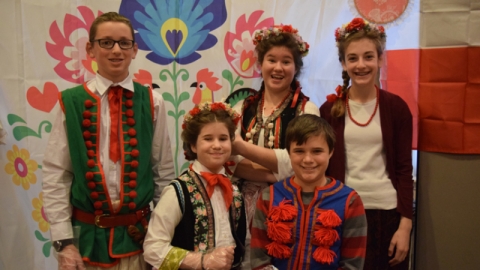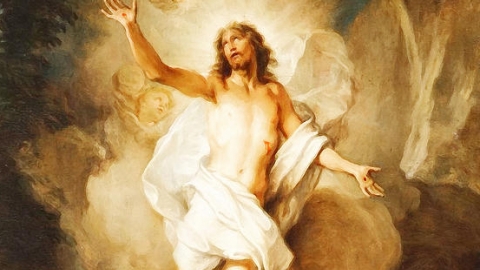Lent Part II: Acquiring the Spirit of Lent

At the very outset we must take positive steps to acquire the spirit of Lent. Through the vestibule of Pre-Lent we enter the sanctuary of the sacred Easter season. What is the purpose of this portion of the Church year? What can it give us? It gives divine life, and in divine life we have the essence and the end of all Christian piety. Objectively, this life was won by Christ through a hard fight in His bitter passion; subjectively, it is now stowed in baptism, and renewed in second baptism or penance.
In briefest outline this gives the high purposes of Lent.
a) Christ's passion! Already during the Christmas octave and in the Sundays after Epiphany the Church introduced the passion motif; in Pre-Lent it received greater stress and now it becomes the major theme. Christ, the divine Warrior, enters into conflict with the Prince of darkness. During the first half of Lent the interior aspect of the conflict is accentuated, while during the second the motif of physical suffering comes into the foreground and reaches its climax in Holy Week.
Recall that in the Christmas cycle we were not merely interested spectators of the mighty struggle between light and darkness; then as now the mystery is re-enacted in each person's heart: in your soul Christ is wrestling with the devil; or better, by the very fact that you are a member of the mystical Christ you are involved in this fight. At Easter we want to be ready to sing Alleluia with our Leader, but the victory can only be gained by death and crucifixion to the natural man. Therefore we must re-live our Savior's passion in Lent; as catechumens we must die with Christ; as penitents we must die with Christ; as disciples we must die with Christ in order to rise with Him as new men on Easter. Christ's passion, accordingly, is not merely the highest motive for a spiritual renewal; rather it must be, in the sense of St. Paul, re-lived by us. We must share His sufferings and death.
b) Baptism. Lent is springtime in the ecclesiastical year. From the planted and dying kernels of divine wheat a wonderful harvest will come, souls ripe for baptism. Lent is the ideal season to prepare for baptism.
In the ancient Church baptism was ordinarily administered to adults. After preliminary preparation that often extended over a period of years, select catechumens were numbered among those who desired baptism and then, as postulants, given special instruction as they participated almost daily in the first part of the Mass. Furthermore, they undertook definite penitential exercises and were the object of repeated ecclesiastical exorcisms. The older Masses of Lent come from this time and frequently were designed with special reference to those preparing for baptism. This fact easily explains the confident and at times joyous tone of the Masses; the baptism motif often loses itself in the jubilant motif of Easter. Preparation for baptism had indeed a serious side, for example, the death of the "old" man; it likewise had joyful aspects, e.g., the maternal pride of the Church, internal transfiguration, the coming Easter celebration.
For understanding the liturgy of the season this is of great importance; not the sober and serious mood of penance but a joyful anticipation of baptism is the spirit proper to the older strata of Lenten texts.
c) Lent is also the period for a second baptism, the painful baptism of penance. It is the time par excellence for interior purification. In the early centuries sinners were obliged to do public penance during Lent; in a solemn penitential service they received the mourners' garb on Ash Wednesday and thereupon were excluded from community services until Holy Thursday. By way of exception they were allowed to attend the Mass of the catechumens. This third and most recent motif in the Masses of Lent (especially on Thursday) gradually found its way into the liturgy after the catechumenate had ceased to exist.
Century by century greater stress was placed on penance with the result that present day Christians who most often approach Christian life from the viewpoint of overcoming sin, regard Lent simply as a time for special penitential practices.
Let us then feel ourselves as true penitents, on Ash Wednesday let us receive the cross of ashes as a dedication to mortification and self-denial; let us try to submerge ourselves in the purifying stream of Lenten penance.
Whatever our status, whether it be catechumen, penitent, or faithful member of the Church, we must never forget that the main task of the liturgy is not to impart instruction but to bestow divine life. Certainly the Masses of Lent give us advice on spiritual renewal (after the manner of retreat conferences); but the purpose of missal readings is less instruction than a demonstration of the power of grace. This is why the ancient Roman liturgy loved to portray the effect of the sacred mysteries in the Lessons at Mass, choosing scenes from the Old and New Testament which typified the action of grace. The readings, indeed the whole variable text of the Mass, were regarded as parables on the graces of redemption coming to the members of the Church from Christ's death on the Cross.
These graces are granted principally in baptism (penance) and in the holy Eucharist, the two great wellsprings of salvation. The first makes a beginning, the second brings growth and perfection; but both have essentially the same effect. On this account not only the catechumen and the penitent, but also the believer, can observe Lent fruitfully in essentially the same manner. Lent brings the graces of redemption to all; some receive incipient, germinal grace, others the grace of growth or perfecting grace.
A typical example is the Gospel about the healing of the man who had been sick for thirty-eight years. Here baptism, penance, and the Eucharist are represented in symbolic form. The catechumen is healed in the water of baptism, the penitent in the laver of penance, and the believer in the blood of Christ. Christ performs this miracle now during Lent on a higher level of reality by baptism, penance, and the Eucharist.
Thus the symbolic character of miracles in the Old and New Testaments is of great liturgical importance.
Lent, then, is the time of salvation par excellence not only for catechumens and penitents, but for the faithful as well. The catechumens attain their goal in baptism on Holy Saturday, the penitents theirs in the reconciliation of Holy Thursday. Lent is designed to aid them in preparing. d through daily Mass the faithful have the divine life within them enriched and perfected. By Holy Thursday they should be free from all sin and cleansed of guilt so as to appear in the full maturity and perfection of grace on Holy Saturday.
We can view Lent, indeed the whole Easter cycle, from the approach of a life filled with God. The Christmas cycle was dominated by the idea of the kingdom of God, a kingdom that was expected during Advent and established at Christmas and Epiphany. Dominating the Easter cycle, however, is the theme of supernatural life engendered, renewed, and perfected. I do not think that this exegesis forces the meaning of the texts.
Continue to Part III of the series on Lent ►
(Taken from Pius Parsch’s The Church’s Year of Grace.)





